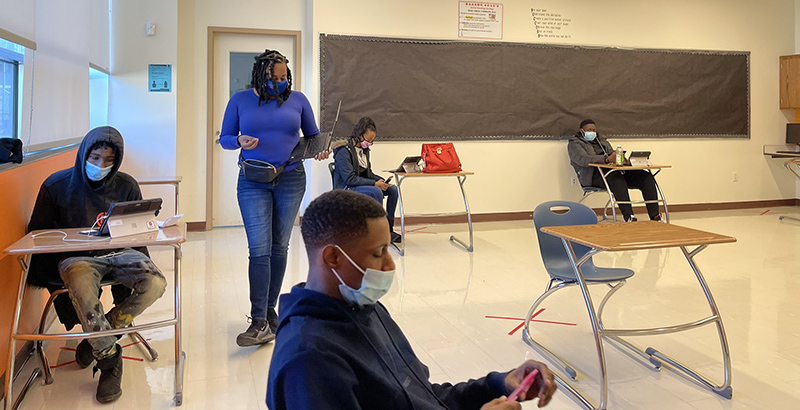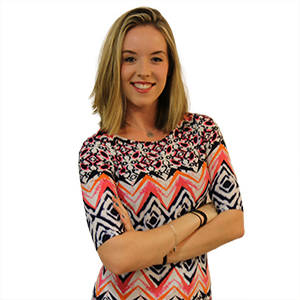D.C. Summer Jobs Program Will Pay Teens to Take Classes as City Combats Learning Loss

D.C. plans to pay several thousand high schoolers this summer to attend class as part of the city’s plan to combat learning loss during the pandemic.
The new “earn-and-learn” program will be added to offerings from the city’s hallowed Marion S. Barry Summer Youth Employment Program, which provides paid jobs and career-building opportunities for about 10,000 14-to-24-year-olds annually, Deputy Mayor for Education Paul Kihn said.
Students selecting that option would have a blended day: Half spent on academics, half on acquiring job experience. Wages will start at $6.25 an hour — something officials hope will entice older students who may need the extra class time but rely on summer work to get a paycheck or beef up their resume.
This year the need is even more urgent. Across the country, the pandemic and recession has financially strained many families, especially lower-income households. Teens have had to take on jobs to help cover family expenses, often putting off classwork and disappearing from remote learning.
“We know [one] reason young people love the summer youth employment program is they get paid a wage,” Kihn told The 74. About 80 percent of youth in D.C.’s SYEP program report spending or saving their income on essentials like food, school costs and other “important obligations.”
“We really focused … on identifying ways that we could go to where the kids would be, and to use those places to provide some additional academic acceleration support,” he said.
The “earn- and-learn” program is expected to accommodate between 2,000 to 3,000 students, Kihn said.
D.C., like other cities nationwide, has seen signs that many of its students have fallen further behind academically during remote learning. In a recent D.C. teacher survey, 51.7 percent of respondents said their students’ academic performance has been “worse” this year. A December EmpowerK12 analysis, too, revealed at-risk students, which includes lower-income, homeless and foster youth, had lost five months of learning in math and four months in reading.
It’s “been a GPA massacre,” Cosby Hunt, an AP U.S. History teacher at Thurgood Marshall Academy, told The 74 in an email. Even some regular honor roll students are “really struggling now as everything is online.”
“Definitely have seen a drop [in academic performance]. Engagement is lower,” added McKinley Technology High School math teacher David Tansey. “I don’t know what else we can do virtually.”
As part of the “earn-and-learn”program, students would spend the first half of the day in-person at a designated school site for “academic learning,” which could range from credit recovery courses to reading, literacy and algebra practice, Kihn said.
The latter half of the day, though, would entail a more traditional work experience. Youth might work at the site itself — in construction, perhaps, if the school is being renovated — or join the IT help desk, assisting families with tech hiccups. If a school site isn’t offering job-related opportunities, SYEP would help pair youth with other prospective employers.
“They’re building a little bit on their resume and they’re getting exposure to different jobs and industries that they’re potentially interested in,” Kihn said. “We want to make sure they still get all those benefits.”
There are various logistics that still need to be ironed out before the June 28 start date, though.
It’s unclear, for example, how many schools will be serving as host sites; the application for that is still open, and “we encourage all schools to participate,” a DME spokesman wrote in an email.
The number of students interested in this “earn-and-learn” option is not yet known, either, though Kihn confirmed more than 20,000 youth had applied to SYEP by the March 13 deadline. Youth can’t list placement preferences until they’ve been accepted into the broader program.
The final tally will be “determined by the number of schools that sign up and the number of students who express interest,” Kihn said. He added that priority eligibility would be given to students who attend the schools that join the program.
When asked who would foot the bill for additional teacher wages, extra PPE and other supplies, the DME spokesman said SYEP would not be providing these funds, but would work “with sister agencies on resources that support school site needs.” There is also about $155 million in federal funding expected to flow to D.C. schools this year that will assist academic recovery efforts.
Part of a larger plan
Integrating academics into SYEP is only one piece of summer planning.
Kihn told the D.C. Council last month the city has the capacity to enroll at least 23,000 students across its various summer programs, with intentions to expand.
Department of Parks and Recreation summer camps — which have more than 4,500 seats available — will incorporate more enrichment activities around critical thinking, reading, math and science, for example (see individual camp types here). Virtually, D.C. Public Library will host another summer reading challenge and corresponding book club.
D.C. Public Schools will host in-person, multi-week “acceleration academies” as well for at least 7,000 kids. This programming will be reserved for students who meet certain target criteria, such as failing a particular subject area or missing 19 percent or more of school days this year, according to a DCPS spokeswoman.
Charter networks like KIPP DC are offering their own summer learning opportunities, too, spokesman Adam Rupe said. He added that while KIPP DC traditionally sponsors programming for dozens of students, this year “will surely be more in the hundreds.”
While the list of summer programs citywide has grown, though, there’s been some criticism in how well all of these options are being communicated to parents.
A few D.C. Council members voiced concerns at a late February hearing on whether families had been adequately engaged in summer planning, and if delaying registration for programs to late March or early April was giving families — especially working parents — too little time to plan.
Councilmember Christina Henderson wishes there was a one-stop-shop website that outlined all city and school-based programs’ registration dates and details.
“We need some synergy here,” she said. “[We need] to move the train along together.”
Get stories like these delivered straight to your inbox. Sign up for The 74 Newsletter

;)
